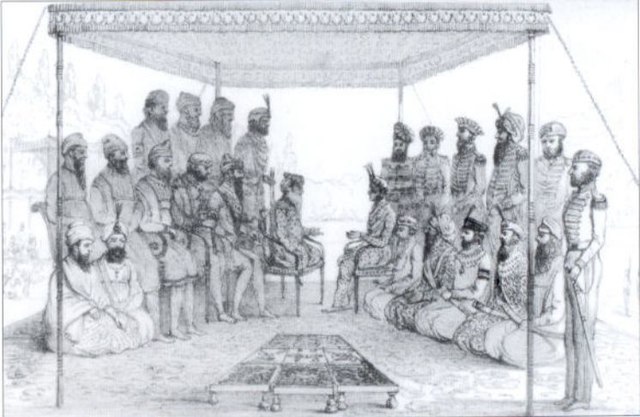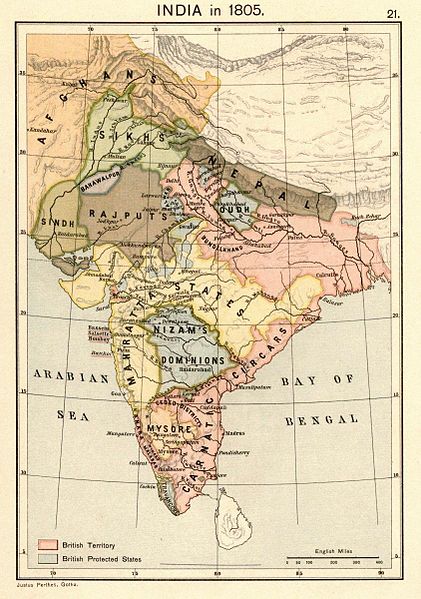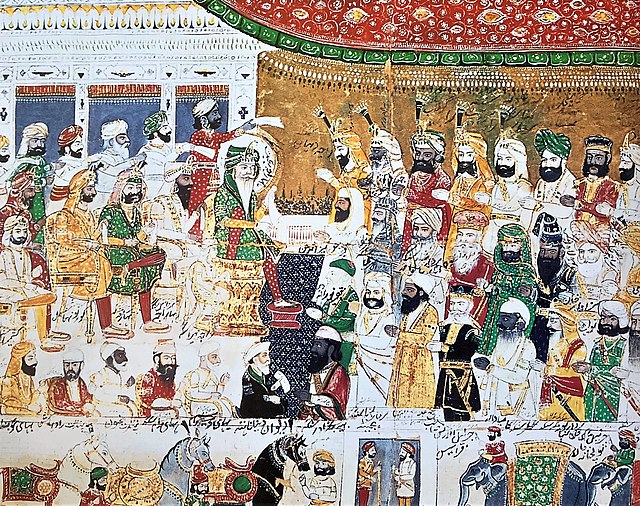The second Anglo-Sikh war was a military conflict between the Sikh Empire and the East India Company which took place from 1848 to 1849. It resulted in the fall of the Sikh Empire, and the annexation of the Punjab and what subsequently became the North-West Frontier Province, by the East India Company.
The Battle of Gujrat, the most decisive battle of the second Anglo-Sikh war
The Sikh Empire was a regional power based in the Punjab region of the Indian subcontinent. It existed from 1799, when Maharaja Ranjit Singh captured Lahore, to 1849, when it was defeated and conquered by the British East India Company in the Second Anglo-Sikh War. It was forged on the foundations of the Khalsa from a collection of autonomous misls. At its peak in the 19th century, the empire extended from Gilgit and Tibet in the north to the deserts of Sindh in the south and from the Khyber Pass in the west to the Sutlej in the east as far as Oudh. It was divided into four provinces: Lahore, which became the Sikh capital; Multan; Peshawar; and Kashmir from 1799 to 1849. Religiously diverse, with an estimated population of 4.5 million in 1831, it was the last major region of the Indian subcontinent to be annexed by the British Empire.
The expanding Sikh Empire in 1809. The Cis-Sutlej states are visible south of the Sutlej River
Ranjit Singh holding court in 1838
The Indian subcontinent in 1805.
Detail from ‘Darbar (royal court) of Maharaja Ranjit Singh’, gouache, ca.1850





